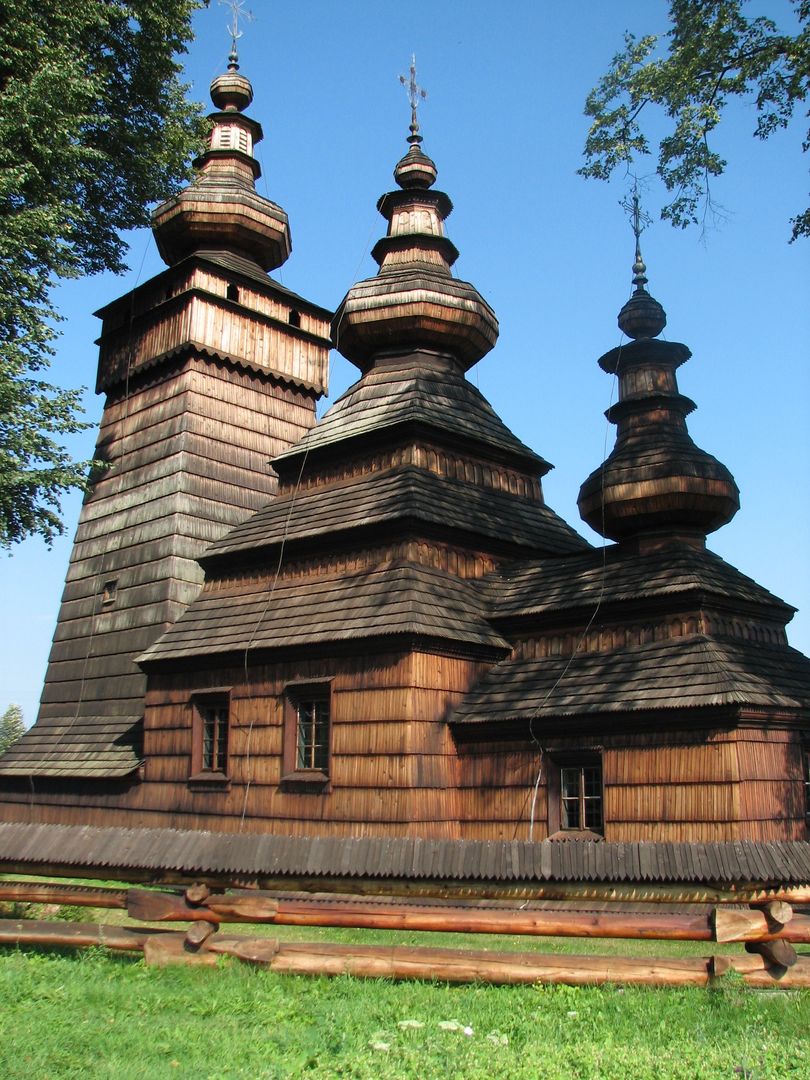The Church of the Protection of the Mother of God on Holy Mount Jawor
7.07

Overview
The Church of the Protection of the Mother of God on Holy Jawor Mountain, built in 1929 on the northern slope of Jawor Hill in Wysowa-Zdrój, is a wooden temple of log construction, erected on a stone foundation. It features a hall-like structure with a three-sided closure, a two-story glazed vestibule, and a sacristy. The roofs are covered with sheet metal, although they were once shingled. The church has two small towers topped with eight-pointed crosses, and its interior is decorated with polychrome paintings. Since its inception, the church has been associated with local Marian apparitions, which attract pilgrims. The main celebrations take place on the fifth Sunday after Easter, on the feast of Saints Peter and Paul, and on the feast of the Protection of the Mother of God, drawing large crowds of the faithful. The sanctuary has a rich history—its origins date back to the 1920s when a resident of Wysowa experienced apparitions. In response, the Greek Catholic bishop of Przemyśl decided to build the church, which was completed in 1929 and consecrated the same year on the feast of the Protection of the Mother of God. The period of World War II and the events related to Operation "Vistula" in 1947 led to the church being taken over by the Border Protection Troops, and its furnishings were destroyed. The return of the Lemkos to the area, beginning in 1956, lasted until 1969 when the temple was returned to the community. The church became a center of worship, and a nearby spring attracted pilgrims from Poland and Slovakia. After numerous legal disputes, in 2017, the church was finally granted to the Greek Catholics, and the Orthodox began holding services on a nearby plot of land. The church and its surroundings, including the iconic spring, are a destination for many pilgrimages, and Jawor Mountain is permanently etched into the spirituality of local believers.
Location
2025 Wizytor | All Rights Reserved